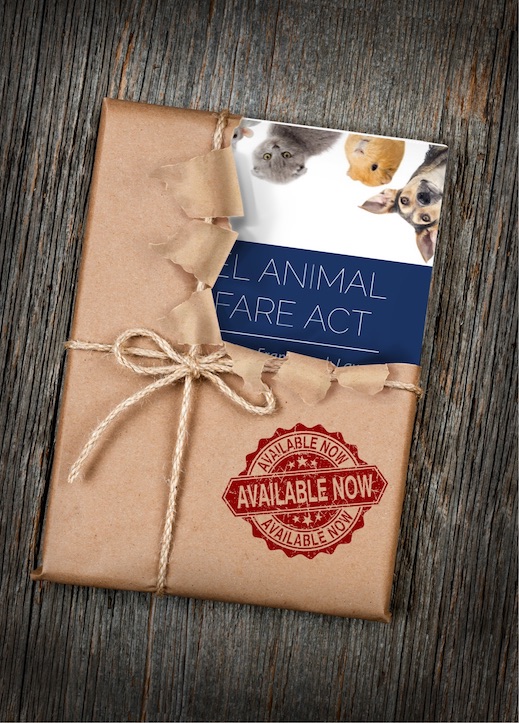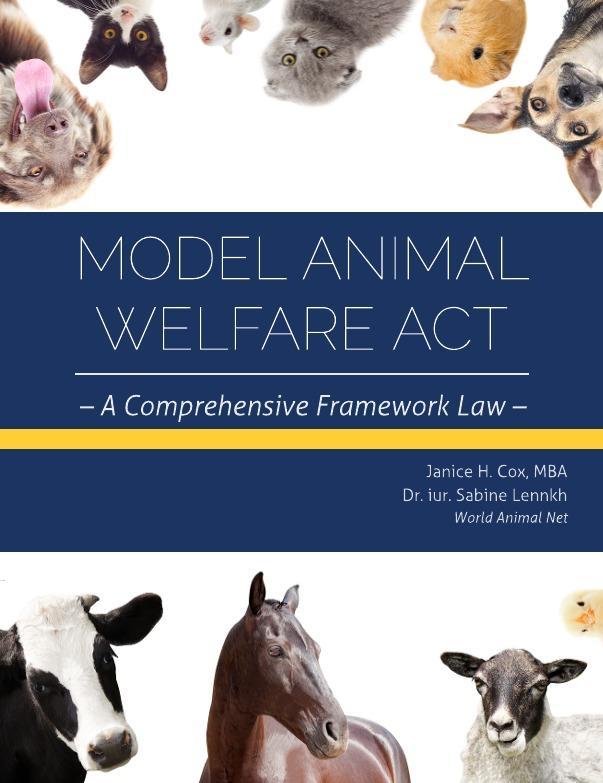
Section 7 Prohibition of Cruelty to Animals
Section 8 Prohibited Interventions Performed on Animals
Section 9 Prohibition of Killing Animals
Section 10 Prohibition of Passing on, Selling, Offering for Sale, Purchasing or Possessing Certain Animals (Doomed Animals)
Section 11 Obligation to Grant First Aid
Section 7 Prohibition of Cruelty to Animals
(1) It is prohibited to inflict or cause pain, suffering or injury on any animal, or to expose them to fear or distress, or illness or disease, without sound justification (based on over-riding reasons of animal and/or human welfare). It is furthermore prohibited, being the owner or person responsible, to cause or permit any animal to be so treated; or for any person to fail to take reasonable steps to prevent such treatment.
(2) Without limiting sub-section (1), sub-section (1) is in particular violated if a person
- Kills any animal using a method which is inhumane, or in a manner that involves pain, suffering, injury, fear or distress for the animal.
- Severs a limb from a live animal.
- Wounds, beats, kicks, over-rides, over-drives, over-loads, overworks, mutilates, torments, tortures or otherwise treats any animal in a way that subjects, or is likely to subject, it to pain, suffering, injury, fear or distress.
- Demands from an animal any work, labour or performance which is beyond the animal’s current natural strength or species-specific behaviour, or of which the animal is physically or health-wise not capable at that time or which involves, or is likely to involve, pain, suffering, injury, fear or distress for the animal.
- Does or omits to do an act with the result that pain, suffering, injury, fear, distress, illness or disease, is caused, or is likely to be caused, to an animal.
- Fails to provide an animal he or she keeps or cares for with sufficient, appropriate and constantly accessible food and drink to maintain it in full health and vigour.
- Offers an animal food or substances the ingestion or digestion of which causes, or is likely to cause, pain, suffering, injury, fear or distress for the animal; or forces the animal to ingest food and substances when this is not necessary due to reasons of the animal’s health or on veterinary/medical grounds.
- Fails to provide an animal he/she keeps or cares for with an appropriate environment including shelter, proper facilities, a comfortable resting area and the opportunity to carry out normal, non-harmful social behaviours, in a way that results, or is likely to result, in pain, suffering, injury, fear, distress, or illness for the animal involved. In the case of an animal being exhibited to the public, this would include a place where the animal has the opportunity to seek privacy from the viewing public at all times.
- Exposes an animal to temperatures, weather conditions, wrong chemistry (for aquatic animals), lack of oxygen or restriction of free movement inflicting, or likely to inflict, pain, suffering, injury, fear, distress, illness or disease on the animal.
- Keeps or confines any animal in any enclosure, cage or other receptacle which is not designed in such a way, or does not measure sufficient in height, length and breadth, to permit the animal appropriate opportunity for movement and performance of its species-specific needs and behaviours, or does not provide access to a natural substrate, (unless this is a temporary measure to safeguard the animal’s welfare).
- Keeps any animal chained or tethered in a way that does not permit the animal appropriate opportunity for movement and performance of its species-specific needs and behaviours (unless this is a temporary measure to safeguard the animal’s welfare).
- Breeds animals which will be, or are likely to be, inflicted with pain, suffering, injury, fear, distress, illness or disease; or where their descendants will be, or are likely to be, inflicted with pain, suffering, injury, fear, distress, illness or disease (inhumane breeding practices).
- Raises an animal in a way that causes, or is likely to cause, them pain, suffering, injury, fear, distress, illness or disease, including subjecting the animal to premature maternal separation, based on the natural age of dispersion of the species.
- Trains, promotes, stimulates or increases aggressiveness or fighting readiness of an animal through breeding selection or other breeding technologies or methods.
- Advertises, imports, exports, keeps, possesses, sells, offers for sale, or passes on an animal bred, raised or treated in the ways referred to in items 12, 13 or 14 of this sub-section.
- Sets an animal on another animal; incites animal fighting or causes an animal to fight against another animal or human; organises, assists or attends the fighting of any animal; owns, possesses, trains, transports, or sells any animal with the intent that such animal shall be engaged in fighting with another animal or human; keeps, uses, manages or assists in the management of any premises or place used for the purpose or partly for the purpose of fighting any animal, or permits any premises or place to be so kept, managed or used for the same; promotes or advertises any event involving animal fighting; or receives or causes or procures any person to receive any money or other valuable for the admission of any person to such premises or place or for the purpose of betting on or assisting at such fights; or possesses, whether for sale or self-use, video images of such fights.
- Promotes, stimulates or increases aggressiveness/fighting readiness of an animal by training, ‘negative reinforcement’ or other similar methods.
- Uses any measures, methods, aids or devices in training or during sports or competitions or similar events which are linked to pain, suffering, injury, fear or distress for an animal; or administers any unauthorised substance or drug in order to enhance an animal’s performance. This shall include the prohibition of ‘negative reinforcement’ methods of training; and a ban on the use of any cruel devices and implements such as bullhooks, electric prods, goads, pitchforks, baseball bats, whips, and any other cruel devices.
- Causes, procures or assists at any shooting or hunting event, match or competition wherein an animal is released from captivity for the purpose of such event, match or competition; or receives or causes or procures any person to receive any money for such event, match or competition.
- Uses any unauthorised devices or methods of capture or entrapment; or uses authorised traps and catching devices in such a way that does not result in capturing the animal unharmed or killing the animal instantly.
- Uses a live animal for feed or bait, or breeds or keeps a live animal for this purpose.
[In cases where the welfare of animals cannot be assured without feeding with live feed or bait, then such animals shall not be kept.] - Conveys or carries, whether in or upon any vehicle or not, any animal in such a manner or position which causes, or is likely to cause, pain, suffering, injury, fear, distress, illness or disease.
- Abandons a domestic or companion animal; abandons or releases into the wild a non-indigenous wild animal; or abandons or releases into the wild an indigenous wild animal which has not been fully rehabilitated to adapt to a life in the wild or where there is any doubt that it will survive in the territory to which it is being released.
- Gives an animal away as, or offers an animal as, a prize or award.
- Uses an animal for film shots, advertising, exhibitions or similar purposes or events if this causes, or is likely to cause, pain, suffering, injury, fear, distress, illness or disease for the animal.
- Performs/carries out an action of a sexual nature on or with an animal.
Section 8 Prohibited Interventions Performed on Animals
(1) Any intervention carried out on an animal other than for therapeutic or diagnostic purposes (in accordance with legal regulations applicable) is prohibited.
(2) It is in particular prohibited
- To partly or completely amputate any body part;
- To partly or completely remove or destroy any organ or tissue of the animal; or
- To carry out any intervention to create a transgenic animal.
(3) Exceptions to these prohibitions are only permitted
- To prevent reproduction;
- To indicate a neutered stray animal by the tipping of an ear; or
- When necessary for over-riding animal welfare reasons; and in such cases, only when there is no alternative solution and the most humane method available has been used.
(4) If the intervention will cause, or is likely to cause, any pain for the animal and in the cases referred to in sub-sections (3) 1. and (3) 2. above, it must be carried out under effective anaesthesia and by a veterinarian, who shall ensure that all available measures are taken to achieve a procedure and recovery free from pain, suffering, fear or distress, in particular including the administration of sedation, local anaesthesia, non-steroidal anti-inflammatory drugs and analgesia.
(5) It is prohibited to mark or identify an animal in such a way that causes, or is likely to cause, pain, suffering, injury, fear or distress.
(6) In addition: Authorisation of the Minister responsible, the Ministry or the Competent Authority to adopt any regulations [and establish, as appropriate, ‘Welfare Codes’, standards and guidance] in this context.
Section 9 Prohibition of Killing Animals
(1) It is prohibited to kill an animal without any sound justification.
(2) It is prohibited to kill a companion animal, such as a dog or cat, for the purpose of obtaining/manufacturing food, feed, fur or other products.
(3) It is prohibited to kill any animal in order to provide entertainment or as part of a cultural ritual or celebration.
(4) Where authorisation is granted for the killing of vertebrate animals for any purpose covered in this Act (for example, humane euthanasia of companion animals and the expert/competent killing of farm or game animals), this must be carried out in a specified humane manner, in accordance with Section 20 below.
(5) In addition: Authorisation of the Minister responsible, the Ministry or the Competent Authority to adopt any regulations [and establish, as appropriate, ‘Welfare Codes’, standards and guidance] in this context.
Section 10 Prohibition of Passing on, Selling, Offering for Sale, Purchasing or Possessing Certain Animals (Doomed Animals)
(1) It is prohibited to pass on, sell, offer for sale, transport or purchase any animal for whom the continuation of life would be connected with irremediable pain, suffering, agony, torment or distress for any other purpose than for its immediate euthanasia. Anybody acquiring or purchasing such an animal has to immediately euthanise, or ensure the immediate euthanasia of, the animal.
(2) It is furthermore prohibited to possess any animal, without reasonable cause, which is suffering irremediable pain, agony, torment or distress.
Section 11 Obligation to Grant First Aid
(1) Every person has, to the extent he/she can reasonably be expected to do so, to grant/render any animal in an accident, during common danger, or injured or in distress the necessary first aid and care, or, if this is not possible, to make all reasonable endeavours to arrange for such first aid and care and/or for appropriate diagnosis and treatment without delay.
(2) The owner or keeper of an animal is obliged to provide any sick, injured or distressed animal with diagnosis and appropriate treatment without any delay; where necessary, veterinary advice must be sought and followed.




